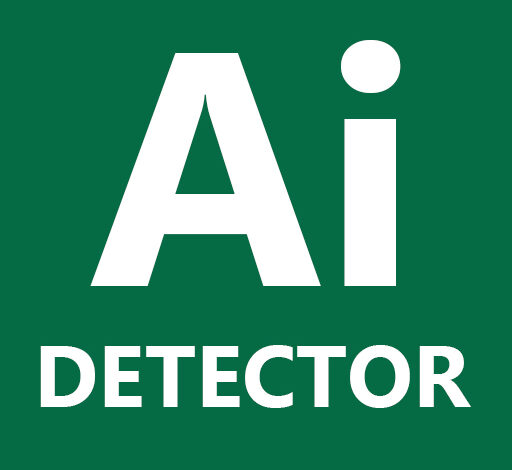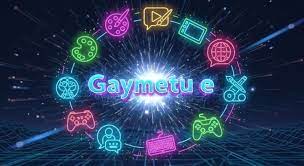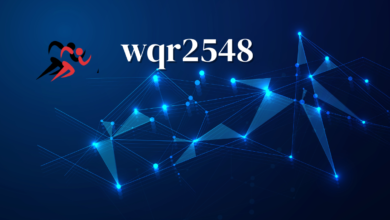AI Detector How It Works, Benefits, and Why It Matters in the Digital Era

In today’s rapidly advancing digital landscape, artificial intelligence (AI) plays a major role in transforming how we create, communicate, and consume information. However, with the rise of AI-generated content, maintaining authenticity has become a real challenge. This is where an AI detector steps in — a powerful tool designed to distinguish human-written text from AI-generated content.
Whether you’re a teacher verifying essays, a publisher checking article originality, or a business ensuring brand authenticity, an can help you identify the source of content with impressive accuracy.
In this article, we’ll explore everything you need to know about — from how they work and why they’re essential to their best applications, limitations, and the top tools available in 2025.
What Is an AI Detector?
An is a software tool or algorithm that analyzes a piece of text (or sometimes images and videos) to determine whether it was generated by an artificial intelligence model like ChatGPT, GPT-4, Gemini, or Claude. These detectors evaluate multiple factors, including linguistic patterns, sentence structure, word frequency, and perplexity — all indicators of machine-generated content.
In simple terms, an acts as a “lie detector” for digital content. It helps identify whether an article, essay, review, or even a social media post was crafted by a human
AI-generated content is everywhere. From blog posts to academic essays and marketing copy, AI tools are producing massive volumes of text daily. While this has improved efficiency, it also introduces challenges related to plagiarism, misinformation, and authenticity.
That’s whys were developed — to ensure accountability, originality, and credibility in the content we consume and share online.
How Does an AI Detector Work?
use complex algorithms and natural language processing (NLP) techniques to evaluate the likelihood that content was generated by a machine.
Here’s a breakdown of how they typically work:
1. Perplexity and Burstiness Analysis
- Perplexity measures how predictable a piece of text is. Human writing tends to have more unpredictable and varied phrasing, while AI-generated text is often more consistent and statistically probable.
- Burstiness looks at sentence variation. Humans write with irregular rhythm and tone; AI tends to produce evenly structured sentences.
A low perplexity score or uniform burstiness often indicates AI involvement.
2. Linguistic Pattern Detection
analyze grammatical structures, repetitive phrasing, and unnatural transitions. AI text tends to use common patterns and filler words, while humans add more nuance and stylistic variation.
3. Semantic and Contextual Understanding
Some advanced s also look at the deeper meaning behind text — context awareness, emotional tone, and logical progression. If a passage sounds coherent but lacks real-world context or emotional depth, it might be flagged as AI-generated.
4. Database and Model Comparison
Certain detectors are trained using known AI model outputs. They compare your input against millions of samples from GPT, Claude, or Gemini to estimate
serve multiple purposes across various industries — from education to journalism and business.
1. Academic Integrity
Teachers and professors use to ensure students aren’t submitting essays written entirely by ChatGPT or similar tools. This helps maintain academic honesty.
2. Content Authenticity
Publishers and editors rely on to confirm that submitted work is original and human-authored, protecting the credibility of their platforms.
3. Corporate Communication
Brands and companies use to verify that marketing material, press releases, and client communication reflect genuine human creativity.
4. Preventing Misinformation
help identify fabricated or AI-altered news articles that could mislead audiences or damage reputations.
5. SEO and Online Branding
Google and other search engines value original, human-written content. Using an helps ensure your website doesn’t get penalized for excessive AI use, protecting your SEO ranking.
Top AI Detectors in 2025
There are dozens of AI detection tools on the market, but only a few stand out for their accuracy, usability, and advanced technology. Let’s explore some of the
One of the earliest and most widely used , GPTZero analyzes text for perplexity and burstiness. It’s especially popular in education and journalism.
Features:
- Simple interface
- Supports bulk detection
- Generates confidence scores
Best for: Educators and academic professionals.
2. Copyleaks AI Detector
This powerful tool can detect text from multiple AI models, including GPT-4, GPT-3, and Jasper AI. It integrates easily with CMS platforms.
Features:
- Multi-model detection
- API integration
- Detailed reports
Best for: Businesses and publishers.
Turnitin is a trusted name in plagiarism detection, and its AI detection feature is specifically designed for schools and universities.
Features:
- Deep linguistic analysis
- Combines plagiarism and AI detection
- Easy-to-understand dashboard
Best for: Educational institutions.
4. Originality.AI
A top choice for SEO professionals, Originality.AI detects AI-generated text with remarkable precision while also checking for plagiarism.
Features:
- Chrome extension
- High accuracy rate
- Team collaboration support
Best for: Content marketers and writers.
5. Writer.com AI Detector
A user-friendly option for writers and editors, this detector provides a quick overview of whether text is human or AI-generated.
Features:
- Real-time feedback
- Integration with writing tools
- User-friendly reports
Best for: Freelance writers and content ed
While are powerful, they’re not perfect. Even the most advanced systems have limitations.
1. False Positives
Sometimes, human-written content may be incorrectly flagged as AI-generated, especially if it follows formal, structured, or repetitive patterns.
2. Evolving AI Models
AI writing tools are evolving rapidly, often outpacing detectors. Newer models like GPT-5 produce text so natural that even top detectors struggle to identify them.
3. Language and Style Variations
are primarily trained on English text. They may be less accurate with non-English content or highly technical writing styles.
4. Ethical Concerns
Overreliance on detection tools might discourage creativity or unfairly penalize users who use AI responsibly for brainstorming or editing assistance.
The Future of AI Detection Technology
As AI continues to evolve, so too will the tools designed to detect it. The next generation of is expected to become more sophisticated, using deeper contextual analysis and cross-media verification.
Future might include features such as:
- Real-time scanning for AI-generated visuals and audio
- Blockchain-based content verification
- AI watermarking integration
- Cross-model comparison tools
The future will likely focus less on penalizing AI use and more on transparency — ensuring users disclose when AI tools are used while maintaining ethical content creation
Knowing how to properly use an can help maximize accuracy and reliability.
1. Combine Tools
Use multiple detectors to cross-check results. This reduces the risk of false positives or negatives.
2. Analyze Context
Don’t rely solely on a score. Read the flagged sections carefully and use human judgment to assess whether the writing feels authentic.
3. Update Regularly
frequently update their algorithms. Always use the latest version for the most accurate results.
4. Balance Detection with Trust
Encourage transparency in your organization. Let writers, students, or team members know when and why AI detection is being used.
Although they may seem similar, and plagiarism checkers serve very different purposes.
AI Detectors
- Identify whether content was created by a machine.
- Focus on sentence structure, probability, and style.
- Detects originality based on linguistic analysis.
Plagiarism Checkers
- Detect copied or duplicated text from other sources.
- Compare content against online databases.
- Identify matching or paraphrased text.
Using both tools together offers a complete content authenticity check — one ensures it’s not copied, the other ensures it’s not artificially generated.
Ethical Use of AI and Detection Tools
The goal of AI detection isn’t to punish people for using technology. Instead, it’s about promoting transparency and integrity.
Writers, marketers, and educators should embrace a balanced approach — using AI tools for idea generation, outlines, or research, while maintaining human oversight and creativity.
Likewise, should be used responsibly — as supportive tools, not final judges. Misuse or blind reliance on them can create mistrust and false accusations.
Tips to Make Your Writing Pass AI Detection (Ethically)
If you’re using AI to help you write, here are a few tips to make your content sound more human and authentic:
- Add personal experiences and anecdotes.
- Use contractions (like “don’t,” “can’t,” “we’re”) for a natural tone.
- Include emotion and humor.
- Break sentence patterns — vary your sentence lengths.
- Fact-check and cite real-world references.
Remember, the goal isn’t to “cheat” , but to ensure your writing has
Search engines like Google have started prioritizing content quality and originality over volume. This means websites that heavily rely on AI-generated articles risk lower rankings.
Using an helps you verify that your website content is human-authored and unique, which can:
- Improve trustworthiness and domain authority
- Prevent SEO penalties
- Boost engagement and reader retention
Marketers and bloggers are now incorporating AI detection tools into their publishing workflow to ensure their sites remain compliant with evolving SEO standards.
Conclusion
s have become an essential part of the modern digital ecosystem. As AI continues to redefine how we create and share content, ensuring authenticity and originality is more important than ever.
Whether you’re an educator maintaining academic honesty, a publisher protecting credibility, or a marketer optimizing for SEO, an can be your best ally in upholding transparency and quality.
However, the goal isn’t to reject AI — it’s to use it responsibly. By combining the creativity of humans with the precision of machines, we can create a digital future built on trust, innovation, and integrity.
FAQs About AI Detector
1. What is an AI detector used for?
An is used to determine whether a piece of content was written by a human or generated by artificial intelligence, helping verify authenticity.
2. Are AI detectors accurate?
Most AI detectors are about 80–95% accurate, depending on the text’s complexity and the AI model used. Accuracy improves when multiple tools are co
Yes, advanced AI models can produce text that’s very human-like, making detection difficult. However, frequent updates help detectors stay effective.
4. Is it ethical to use AI detectors?
Yes, as long as they’re used transparently to ensure originality and integrity, not to unfairly accuse or penalize individuals.
5. Are AI detectors free to use?
Some offer free versions with limited features, while premium tools like Originality.AI or Copyleaks provide more detailed analysis for a fee

